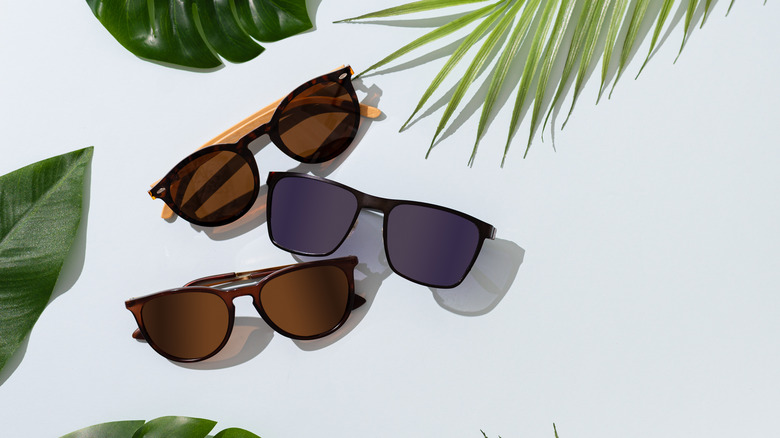This Is How Much Sunglasses Really Protect Your Eyes
Wearing sunglasses doesn't just make you look cool, or even simply protect your eyes from the bright light of the sun so that you're not squinting constantly. Sunglasses should also be able to protect your eyes — and the delicate skin around them — from damage from the sun's UV rays.
The sun's UVA and UVB rays can cause skin cancer in general, and the delicate, thin skin around your eyes is easier to damage than skin in other areas. UV rays won't just damage your skin: These rays can also hurt your retina and your macula, found in the back of your eye (via WebMD).
And UV protection doesn't just matter in the summer months: "Whether it's winter or summer, cloudy or sunny, you're always subject to ultraviolet exposure," ophthalmologist Elliot Levine explains (via Piedmont Healthcare). He recommends making sure that your sunglasses don't just cover your eyes, but wrap around to cover your face more fully to prevent exposure to the sun. The right sunglasses don't need to be pricey, either: UV protection is available even with inexpensive lenses.
What should you look for in sunglasses?
For maximum protection, look for sunglasses that offer UV protection: Many cheaper brands won't have this, and remember that polarized isn't the same thing as protective! The Moran Eye Center at the University of Utah recommends buying lenses that offer "100% protection against both UVA and UVB" or "100% protection against UV 400."
"The most important advice is to put on your sunglasses whenever you are outside," ophthalmologist Jeff Pettey, M.D., added. "Sunglasses are to the eyes what sunscreen is to the skin."
Lens color doesn't matter when picking new shades. "The color of the lens you choose — gray or brown — is a personal preference and has no impact other than that," ophthalmologist Inna Ozerov, M.D., explained to The Healthy.
"For even more sun protection, wear a hat with a brim to block your eyes from the sun even more, and avoid peak hours of exposure: Stay out of the sun from 8 to 10 a.m., and from 2 to 4 p.m. (via WebMD).


